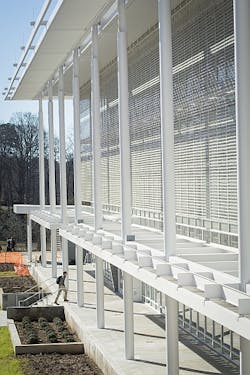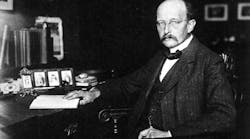Networked SSL system using Power over Ethernet delivers controllable lighting while sensors also allow Clemson University to autonomously gather real-time data including occupancy and more.
Philips Lighting has announced a Power-over-Ethernet (PoE)-based LED lighting system in the new Watt Family Innovation Center at Clemson University in Clemson, SC. The solid-state lighting (SSL) project is projected to deliver 70% energy savings relative to similar buildings that have legacy lighting while also allowing network controls of the lighting and data gathering via sensors integrated in the luminaires.
Interested in more articles & announcements on Power over Ethernet technology?
Power over Ethernet appears to be a technology that’s gaining traction in lighting, although it has also brought new players from the IT sector into lighting and raised the question of who will own networked lighting down the road. Moreover, PoE has created partnerships such as the one between Philips and Cisco that would have seemed unlikely in the recent past.
The primary allure of PoE is twofold. Commercial lighting is generally moving toward a networked future and PoE enables a single Cat 5/6 cable to power and network an LED luminaire. Furthermore, PoE handles the energy-wasting AC/DC power conversion centrally and distributes DC power to individual luminaires — a net energy saving scheme compared to having AC/DC conversion in each luminaire.
Ironically, PoE first came to the public forefront at Strategies in Light (SIL) 2013. Later that year, we covered PoE as one of several options for DC power distribution to SSL fixtures. Back in 2013, the prevailing wisdom was that commercial businesses would never entrust lighting to being powered by an Ethernet network switch. Fast-forward a couple of years and the technology has real momentum. It is still only practical in new construction or major retrofit projects because new wiring is required, but there are such projects aplenty.
We are just seeing the first broad deployments of PoE SSL systems as the first article linked above describes. Indeed, the Clemson project may be the first large-scale project in the US outside of PoE lighting installed on the Cisco campus in the Silicon Valley area of California.
The Clemson project will use the integrated sensors for autonomous control of the lighting based on occupancy and ambient light levels. The occupancy data will also be collected for analysis, allowing the university to track space utilization trends. The lights also can be programmatically controlled. And users of individual spaces in the building will be able to adjust local light levels using smartphones that link wirelessly to the Philips EnvisionManager lighting control system.
“This is the first time that a University in the US will benefit from a commercial Power over Ethernet connected lighting system which will be able to deliver more control, energy efficiency and cost savings directly to the center,” said Amy Huntington, president of Philips Lighting Americas. “We are proud to be a founding innovation partner and help support the vision of the center with these lighting solutions. The Watt Family Innovation Center is a beacon for progressive schools like Clemson University looking to engage and motivate their students to develop cutting-edge ideas in collaboration with industry and government that can have real-world impact.”
In addition to the PoE installation and the indoor lighting, Philips also supplied an impressive façade lighting scheme for the Innovation Center. Philips described the project as the largest media façade installation in the US including more than 45,000 individually-controllable light points. The project uses iColor Flex LMX gen2 luminaires and the dynamic lighting is meant to emphasize the university’s innovative brand image and to enhance school spirit.
“We have built a cutting-edge facility that showcases Clemson’s academic enterprise in action,” said Charles Watt, Clemson alumnus and founding director of the Watt Family Innovation Center. “Philips has been an outstanding partner and their lighting solutions allow us to reach our sustainability goals while giving us the ability to better understand how the building is being used and the ability to adjust the space-flexible facility as needed. We are most appreciative of the partnership and the products they have in this new building on the Clemson University campus.”







